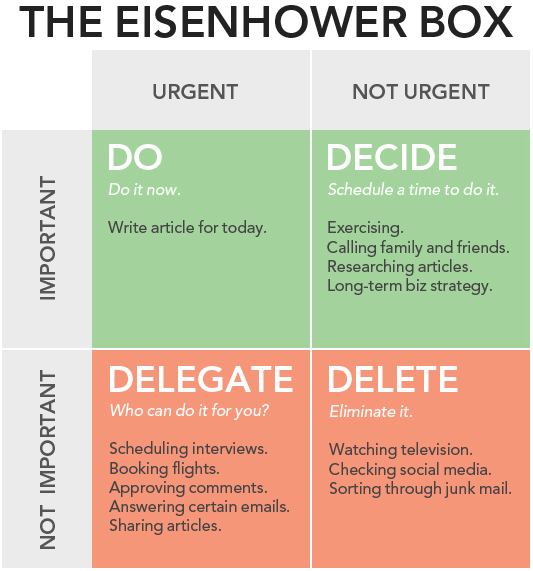How To Delegate
In Episode 4 of the Family Ministry Podcast, I talked with Jim Wideman. In the midst of our conversation, Jim referenced the book 21 Irrefutable Laws of Leadership by John Maxwell (my affiliate link). He said you could read the first law (Law of the Lid) and throw the rest out. Now, I think the entire book is good, but Jim's point is well taken.
The Law of the Lid simply states that leadership ability determines effectiveness. If we do something on our own, without leading others, there's a natural limit to our potential. We can only do so much on our own. However, if we can lead others, the lid is raised and our potential is only limited to our leadership ability.
In order to lead and multiply our impact, we must learn how to delegate well.
The Ultimate Guide to Delegation
The name of this post is a bit overzealous, as I could never include everything we need to know about delegation. Also, as you'll quickly realize, this isn't a post full of all my thoughts on delegation. It's really a collection of all I have learned from other leaders with a few of my own thoughts tossed in.
I'm breaking everything down into 4 categories you could walk through, in order, to delegate well. The categories are:
- What to Delegate
- To Whom to Delegate
- How to Delegate
- Resources to Delegate Better
Mixed in the categories you'll find the 7 Steps to take as you seek to delegate well.
What to Delegate
The first step to delegating is to determine what you should delegate. You want to list out everything you do. In order to make the list truly helpful, follow these steps.
Step 1: Make Your Lists
- List everything you do. Every task. Every meeting. Every communication. Every project. Everything.
 Create 3 categories
Create 3 categories
- Stop Doing – At first, you'll think if there's anything you could stop doing, you wouldn't be doing it now. But, that's rarely true. You can almost always find things you can stop doing, not because they're worthless, but because they're not essential. Thanks to Jim Collins for this one.
- Others Could Do – You'll be tempted here to think about who could do each thing. Don't do that. You can't limit your answer to who is available now. If somebody else could do it without needing to be in your role, put it here.
- Only I Can Do – You should have very few items here. Most of them should be tied to your role, and specifically to the aspects of your role nobody else can do.
- Stop doing everything on the Stop Doing list. Seriously. Stop
- Prioritize the Others Can Do list based on how easily you could delegate each item.
At this point, you have a helpful list and you're ready to start delegating.
To Whom to Delegate
It's impossible to delegate without having other people to take on what you wish to delegate. Now, most of you are probably thinking “Exactly! That's my problem. There's nobody to delegate to!”
I get it. It's hard.
If it were obvious you would have delegated already. But, here's what I know. There are almost always more people we can delegate to than we realize. We expect people to volunteer themselves or appear out of thin air. In many cases, we think everyone is too busy and nobody would want to do it. Don't say “no” for anyone.
When you're looking at an item in your Others Could Do category, before thinking about specific people, classify the type of item you're delegating.
Step 2: Classify Your “Others Could Do” Items
- Is this a task?
- Is this authority?
Craig Groeschel says it best when he says:
“When we delegate tasks, we create followers. When we delegate authority, we develop leaders.”
That's not to say that you should never delegate a task. You should. But, it's helpful to identify on the front-end whether it's a task or authority, because who you delegate to will be determined by that choice. It's best to have a leadership development bias and, if it's a task, determine if there is authority somewhere above that task that could be delegated.
Step 3: Create A List of Names
Now that you know the importance of knowing what type of item you're delegating, create a list of every person and every group that could potentially include someone with whom you could delegate.
How to Delegate
You can probably crank through those first 3 Steps pretty fast, but things get a little more difficult now. I believe there are 3 main reasons why we find it difficult to delegate and it's important to understand them and not let them be an obstacle.
Step 4: Remove the 3 Obstacles
- Delegating takes more work up front than simply doing it ourselves.
Remove this obstacle by committing now to put in the work that's needed up front, because the payoff is having more time than you had before. - We dump responsibilities on people with no clarity, no training, and no help.
Remove this obstacle by putting in the work up front in order to fully prepare the items you wish to delegate. Otherwise, you'll delegate items and they'll come back to you shortly after because people quit. - We are concerned the person we delegate to will not do it to our standard.
Remove this obstacle by deciding beforehand that you are okay with it being done 80% of how it was done before. In addition, decide you'll be okay with it being done differently than it was done before.
Most of those obstacles are in our minds. Once we acknowledge them and decide to remove them, we can take action without being held back by doubt.
Step 5: Create Process Documents
This isn't exciting, but if we want to delegate well we have to train and prepare people well. Often times, this simply means we need to document every step that is required to complete the process. You can do this one of two ways. One way is to create a step-by-step document that anyone can follow. Walk them through it and give them freedom to improve on that process.
The other way is to document the vision (the “why”) and the desired outcomes (the “what”), and let them figure out the “how”. This goes back to Craig's quote about creating followers or developing leaders. It's perfectly fine in many instances to create the step-by-step guide, especially if a process has proven to be successful.
Step 6: Get Clear On The Delegation Level (5 Levels or more)
Sometimes delegation breaks down because we didn't train people well and clarify the process, but other times it breaks down because we're not clear about the level at which we're delegating. There are 2 excellent resources I want to point you to that can help you understand the different levels and use them as you delegate.
Resource 1: Michael Hyatt's post about the 5 Levels of Delegation
Resource 2: Andy Stanley's Podcast episodes entitled Delegation Dilemma Part 1 & Delegation Dilemma Part 2
They're very similar and regardless of how you define the levels and what language you use, the important part is that you have agreed upon language and you actually use it when you delegate. Tell the person you're delegating to which level this is and, therefore, what you expect as a result. I like the 5 Levels of Delegation, regardless of how you label and define them.
Step 7: Hand It Off!
At this point, you should have your list of items to delegate, names of people to delegate to, resources to help them, and clarity about what you're expecting as you delegate to them. You can match people to the items to delegate and make the ask. If they say “no”, okay, ask someone else. Keep at it until you've handed off everything on your list!
Resources to Delegate Better
I hope those 7 Steps will help you delegate more and free up time in your calendar to lead, dream, learn, rest, and anything else that's important, but not happening right now. There are a few other resources I want to share that may be helpful as you delegate.
The Eisenhower Box
 The Eisenhower Decision Matrix, or Eisenhower Box, is a great tool to use as new items come across your plate. It's great to go through the 7 Steps and delegate as much as you can, but the reality is new things will always come along.
The Eisenhower Decision Matrix, or Eisenhower Box, is a great tool to use as new items come across your plate. It's great to go through the 7 Steps and delegate as much as you can, but the reality is new things will always come along.
What do you do with those?
This tool can help. Take the new item and run it through the grid to see which quadrant it falls in. Act accordingly.
Sandbox Analogy
On our team, we use the analogy of a sandbox to refer to what decision-making authority we have with our responsibilities. For instance, someone on my team may be responsible for pulling off a weekend retreat. If it's new, we would talk and define the sandbox so they know what they can decide (in the sandbox), and what I want to weigh in on (outside the sandbox). Ideally, we keep pushing to expand their sandbox and lessen our input.
Books
Essentialism (my link)
First Things First (my link – made the Eisenhower Box popular)
Articles
Management Time: Who's Got the Monkey?
The 10 Rules of Successful Delegation
Video / Audio
Craig Groeschel on Entreleadership Podcast
Craig Groeschel at Catalyst One Day – Let Leaders Lead
Kenny & Elle talking delegation on the Youth Ministry Answers Podcast
Bonus: PDF + Worksheet + Story
Use the form below to get three bonus resources, a PDF of this post (to refer back to), a Delegation Worksheet you can use to walk through this process, and an interesting story you can read with your team to spark conversation about delegation. The story is especially helpful if you find yourself delegating things only to have them come back to you because people can't take the initiative on their own to get it done.







–